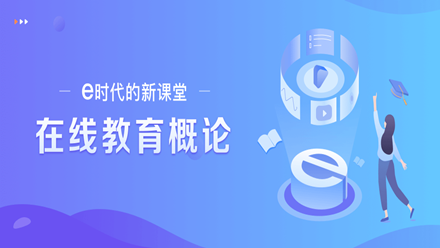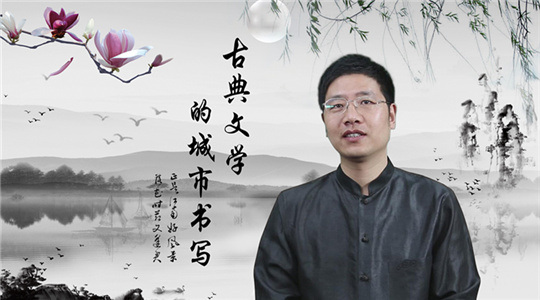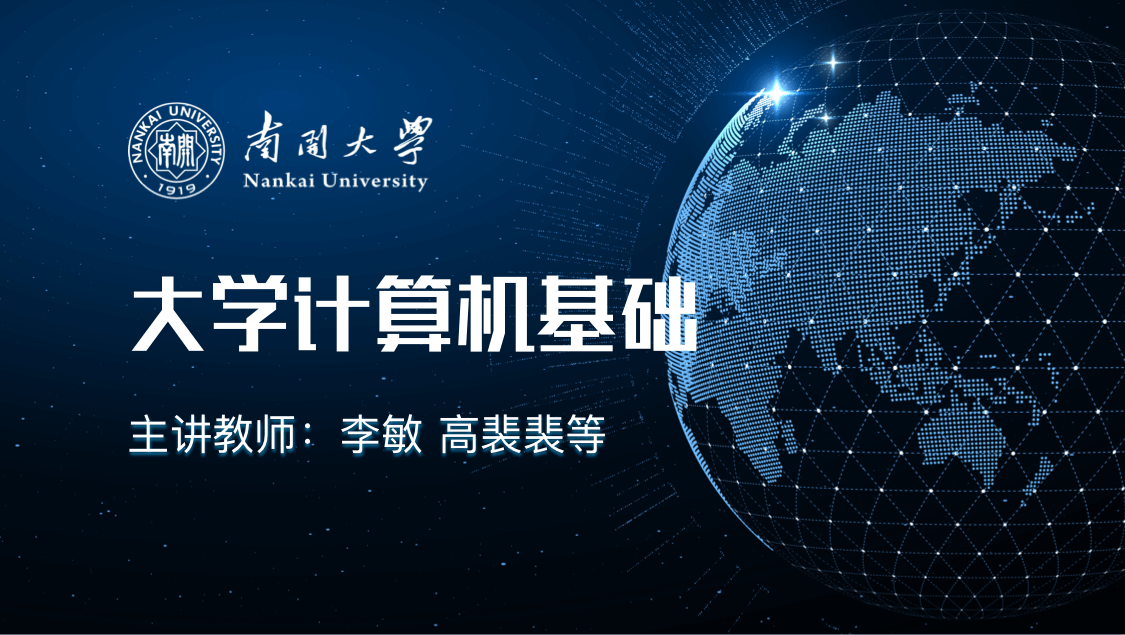
当前课程知识点:e时代的新课堂——在线教育概论 > 第一章 解读在线教育 > 1.4.4虚拟教育组织 > 1.4.4虚拟教育组织
我研究在线教育
I've been studying online education
应该已经有十几年了
for more than ten years.
所以经常会碰到一些学生
Some students
包括业内的人士就会去问我
and insiders of the industry
这样一个问题
have asked me the following question:
说你觉得在线教育
"Do you think online education
真的要颠覆大学吗
will change the core of universities?"
经常会问这个问题
People always ask me such a question.
对于这个问题
For this question,
我想我们通过这个途径来思索
I think we can look at it this way.
我把这个称为
I'll call it
是一个虚拟教育组织
a virtual education organization.
因为关于虚拟企业的研究
Around the year 2004,
在2004年前后
many business or management schools
在很多商学院或者管理学院
conducted a lot of research
就有过大量的研究
on virtual enterprises,
那么这里面也有一些
which inclulded
非常成熟的企业形态
very mature forms of business,
就像电子商务这类的形态
such as e-commerce.
但是在教育领域
But in the field of education,
关注这个虚拟教育组织的研究
I searched
我们搜了之后发现
and found just a little research
还不是很多
on virtual education organizations.
所以我觉得
So, I think in terms of
关于它是否要颠覆大学这点
whether online education will dramatically change universities,
我觉得我们似乎
maybe we can see it
可以通过这样一个角度来理解
from the perspective
就是虚拟教育组织
of virtual education organizations.
那么支撑我们对这个事情理解的
To understand this issue,
一个非常重要的理论
let's look at a very important theory.
我觉得也是来自
It was created
美国一个非常重要的传播学家
by a well-known US expert in communications,
他叫约书亚·梅罗维 茨
Joshua Meyrowitz.
他写了一本书叫《消失的地 域:
He wrote a book titled
电子媒介对社会行为的影响》
"No Sense of Place: The Impact of Electronic Media on Social Behavior."
在这本书里
In this book,
梅罗维茨基于戈夫曼的舞台 论
which is based on Erving Goffman's Dramaturgical Theory
和麦克卢汉的这种媒介环境学的
and McLuhan's theory
这种学说
on media ecology,
他搭建了一个新的
Meyrowitz built a new
一个理论框架
theoretical framework
叫新场景理 论
called the Theory of New Setting.
这个新场景理论
I think the core idea
我觉得有一句
of the theory
非常核心的一句话
lies in these words
就是我在这跟大家显示的
I'm showing you here.
就是电子媒介
Electronic media....
因为他的那个
As the writer
他当时研究的时候
did the research
应该是上个世纪
in the second half
后半叶的一个研究
of the last century,
他当时关注的
he mainly paid attention
主要其实还是那种有点广播电视
to radio and television broadcasting.
但是这个电子媒介
But here we can also replace electronic media
我们同样可以替换成互联网
with the Internet.
我们可以这样说
We can say:
互联网对组织的影响
"The Internet's impact on organized systems
并不是因为讯息的力量
doesn't come from the power of the information itself,
而是因为它什么呢
but from the fact that
因为重新组合了
it recombines
人们交往的社会环境
the social environment in which people interact
削弱了有形地点与社会地点之间
and weakens the once close relationship
曾经非常密切的联系
between the physical location and the social location."
梅罗维茨还特别又强调了
Meyrowitz also emphasized
另外一句话
some other points in particular.
他说怎么样我们在研究这个
He said when we study
基于特定物理地点的联系
Contacts based on a specific physical location
和基于一个信息系统的联系
and contacts
这两者期间
based on an information system,
实际上我们更重要的是要看
we should focus more
在这个群体之间的
on the structure of information flows
信息流动的结构
in the community.
所以这个就是梅罗维茨提出的
This is the Theory of New Setting
新场景理论
proposed by Meyrowitz.
我们可以用新场景理论
We can use the theory
来分析一下
to analyze
目前已经非常成熟的一个变革
a mature revolution,
就是零售业的变革
which is the revolution in the retail industry.
零售业 你看我们今天商场里面
You see, nowadays,
人已经越来越少了
fewer and fewer people come to shopping malls.
甚至店员比顾客还要多
There may be more salesclerks than customers.
所以我们从这个零售业
The change from shopping malls to online stores
从商场到网店的这个变化里面
in the retail industry
我们如果套用
can be analyzed
梅罗维茨的这个理论
with Meyrowitz' theory.
我们会看到
Then we realize that
比如商场是一种购物场景
the shopping mall is one setting for shopping
那么网店也是一种购物场景
while the online store is another.
在这个商场购物场景里面
We'll analyze
当然它的地点
the shopping mall setting
交流媒介和交易行为
in three aspects:
我们从这三个方面来分析
Location, communication medium, and trading behavior.
在商场它是一个物理的空间
The shopping mall is a physical space,
对吧
right?
那么在这个物理空间下
In this physical space,
买卖双方用什么样的媒介
what kind of medium is used
进行交流呢
by buyers and sellers to communicate?
用口头语言
It's oral language.
口头语言
Oral language.
口头语言来交流
They use oral language to communicate.
那这个卖场
Then what role
它到底起了什么样的作用
does the shopping mall play, exactly?
首先第一个
First of all,
它就是展示商品信息
it shows products' information.
因为我们知道
As we know,
原来零售业有一个常说的一句话
the retail industry has an often-mentioned term
叫铺货
called distribution.
铺货是什么
What is distribution?
铺货就是让一个消费者
Distribution allows customers
一进这个商店之后
to obtain the information
第一眼就能获得
of products
这个商店能提供
Immediately at a glance
什么样商品的这样一个信息
after arriving at the store.
商品供应信息
It offers information on the product supply.
所以这是卖场的
This is the first major feature
第一个非常重要的特点
of the shopping mall.
第二个它在交易行为里面
Then it comes to the trading behavior.
就包括我选中了
I choose a product
那我就开始讨价还价
and then I begin to bargain.
就是多少价格
How much the price is.
第三个当然就是付款 提供现金
The third step is the payment in cash, of course.
第四个其实就是提货
The fourth is picking up the product.
因为卖场本身充当了库房的作用
The shopping mall itself acts as a storehouse,
因为它东西就在那儿嘛
because the products are displayed there.
那我们把这个场景给它拆解开
Now we will deconstruct this setting
在网上重构之后
and restructure it online.
你会看到这几个场景
Then you'll find that
逐步的变成了
the setting gradually turns into
右边的这一列
what I list on the right column.
那么淘宝网店
What's the setting
它的这个场景是什么
of an online Taobao store?
其实是一个淘宝店的页面
It is actually the webpage of the Taobao store.
这个页面有点就像
The webpage is a bit like
一个商场的门店一样的
a store in the shopping mall.
第二个我们怎么样
Second, how do
买卖双方怎么交流呢
buyers and sellers communicate?
我们实际上使用的
In fact, they use
是远程通讯工具
remote communication tools.
就是今天微店都是用微信
At present, WeChat stores are using WeChat
然后阿里它主要用阿里旺旺
while Ali stores mainly use Aliwangwang
做文字语音的交流
for written or vocal communication.
就是把这个交流的形态
Communication has changed into
变成了这样一种形态
an online form.
第三个你比如说展示商品
Third, how are the products
怎么样体现呢
shown online?
其实就是我们在淘宝平台上
In fact, they are shown
看到的那些图片
in the form of pictures and standardized parameters
包括它那些标准码
on Taobao platform.
就是大家看网店
When we see an online store,
可能只看一些
we may just see
表面很热闹的东西
those interesting things on a superficial level.
但是实际上这个电子商务的过程
But we can't see the process of e-commerce
其实背后的
behind them.
你包括所有的鞋类 服装类
Shoes, clothes
生鲜类
fresh food, and others
它形成了大量的这种
have all been through
对产品的标准化过程
the process of product standardization.
所以它用了标准化的方式
So, these products are shown
展示商品
in a standard way.
所以就这一点来说我觉得
In this respect, I think....
你看现在
You know,
那哪怕像再大的一个mall
no matter how big a shopping mall could be,
像北京的那个金源 mall
like the Golden Resources Mall in Beijing,
你能展示的商品的数量
it can only show a
你总是有限的
limited number of products.
你哪怕再大
It will finally reach the upper limit,
你上限10万 20万 几十万
which may be 100,000, 200,000 or hundreds of thousands.
但是网上它是无限的
But on the Internet, the number is unlimited.
所以这个其实就是今天
Therefore, today,
这种零售业变化的
a very important change
非常重要的一点
in the retail industry
就是它能提供的
is that online stores could provide
这种商品供应信息
more information on the supply of commodities
大大超过了任何一个实体网店
than any physical stores could.
然后我们再看这个中介
The process of communication, or bargaining,
讨价还价
has also turned into
变成了以网络为中介的
distance interaction
远程的这种交互
relying on the Internet.
然后付款就衍生出来
Cash payment
这个第三方支付
evolves into the third-party payment system
像支付宝 一个新的液态
represented by Alipay, a new form of payment.
然后提货这件事本身
In terms of picking up,
它就有了专门的物流仓库
we have specialized logistics warehouses
以及物流的配送
and logistics distribution.
这是这样的一个变化的过程
This is how we see the change
我们用梅罗维茨的理论来做
from the perspective of Meyrowitz's theory.
梅罗维茨理论
Meyrowitz's theory
有三个特别重要的要素
has three significant factors:
就是地点 交流媒介 交流行为
location, communication medium and communication behavior.
那我们用这个模型
Now let's use this model
我们来再看一下
to look into
未来的这个教育形态
the possible change of education form
它可能有什么变化
in the future.
那一般在传统课堂里面
In traditional classroom teaching,
已经形成了这样的一些
we've formed the following
教学的组织过程和行为
teaching process and behavior:
你比如说每个大学里面
In every university,
每个学期我们学生会
students are given
要有一个学习日程
a learning agenda for the semester,
然后告诉你
which tells them
每周我们到哪儿去meeting
the location of weekly meetings.
因为是一个面对面的
It is a face to face communication,
有点像会议一样的形式
a bit like a conference.
然后我们在
Then how's the instructional content
教学内容在教室里面怎么呈现呢
presented in the classroom?
我们通过黑板 板书
We use blackboard-writing,
通过投影
projection and lectures
通过教师的讲授来提供教学内容
to provide instructional content.
然后我们还要给学生设计
Then we design
很多的课后作业
a lot of homework for the students.
然后还要对他提供
We also have to offer students
这种教学的评价与反馈
assessments, feedback,
以及基于模型和实物的一些展示
demonstrations with models and real objects,
还有考试
as well as exams.
这就是在教室这个空间里面
These are the instructional behaviors
会发生的一些教学行为
taking place in the space of a classroom.
那么在在线的这个情景下
In the context of online education,
我们实际上是把传统课堂的
we actually deconstruct
这样一些行为进行结构之后
some behaviors in the traditional classroom
又有一个重构的过程
and restructure them online.
好比第一个学习日程
For example, the learning agenda
在在线其实就直接变成了
has become Lecture One, Lecture Two,
像coursera平台上的第一讲
Lecture Three, and so forth,
第二讲 第三讲
on platforms like Coursera.
连续的这样一个安排
It becomes a continuous agenda like this.
你就不需要再拿着一个document
You don't have to use an agenda
就是文档性的日程
written in a document.
而是平台上直接阐释的
The platform will offer you a dynamic agenda
就是一个动态的日程
that would be demonstrated online.
然后第二个呈现教学内容
Then the second, the presentation of teaching content.
我们现在有了课件
Now we have slides,
教材 视频等等这样一些类别
textbooks, videos and others.
那么我们在线也可以配合每一讲
We can also arrange all kinds of instructional activities
安排各类的教学活动
in line with every online lecture.
那么每一个教学活动
Students' performance
其实也包含了
in each instructional activity
就是(07:1 1)
will be evaluated by their classmates
或者老师对他的一些评价
and the teacher.
然后对每一项学习活动
Their performance in each learning activity
就要打分
will be graded.
这个打分最后合起来
In the end, all the grades together
就变成了一门课程的
become the formative assessment
一个过程性评价
for students in the course.
看一下这种教学团队的
Now let's see the restructuring process
一个重构的过程
of teaching teams.
我们在这列了一个
Here I have
虚拟教学团队
a virtual teaching team.
我们来比较一下
We'll compare it
在传统的这个教育机构里面
with teaching teams in traditional educational institutions.
比如说你在清华
For example, undergraduates at Tsinghua University
在北大读一个本科
or Peking University
你四年期间要学好几十门课程
have to learn dozens of courses in four years.
那么这些老师
These teachers
他们实际上都是在
are actually working
共同的一个大楼里面工作
in the same building.
比如像我在北京 教学
For example, I teach at Peking University's Graduate School of Education.
我们所有老师
All my colleagues and I
都在这个大楼里工作
work in the same building.
然后我们日常的
Then how do we usually
这个教育学院的日常交流
communicate with each other
我们靠什么
at the Graduate School of Education?
其实主要依赖的是口头语言
We mainly use oral language.
比如说定期开会
For example, we have regular meetings
还有非正式的老师的个别交流
and some informal exchanges among teachers.
就是这是传统教育机构
This is the general communication
常用的一个教学团队的
for a teaching team
一个交流方式
in a traditional educational institution.
那么在互联网上我们就会看到
But on the Internet,
其实当你完成一个学位的
you'll find that
这种学习过程里面
in the learning process to get a degree,
可能给你进行这种教学交流
you may have teachers from all around the world to
指导的老师
communicate with you
可能是分布在世界各地的
and give you instructions.
我们这画的这个图还比较保守
The picture here is still a little bit conservative.
分布在中国各地
It just depicts teachers
教师分布在中国各地
from all over China.
那么这样一个教学团队
Then what's the thing
它如何形成凝聚力呢
that holds such a teaching team together?
它定期的这种管理交流
How are the management and exchange
依靠什么呢
carried out?
其实就是依靠我们网上的
Actually, they are executed
远程的这样一些交流工具
through remote communication tools.
顺便说一下这种虚拟教育组织
By the way, these kinds of virtual education organizations
其实早就实现了
have already had these tools for a long time.
我们在2007年曾经承担了
In 2007, we undertook an experimental course on training teachers
教育部的国培计划 之前的
prior to the National Teacher Training Program
一个教师培训的实验课程
put forward by the Ministry of Education.
这个课程在北大
From 2007 to 2013,
从2007年到2013年
the course offered by Peking University
总共累计起来培训了
trained over one million
100多万中小学老师
primary and secondary school teachers in total.
北大我们之前其实
Prior to that, Peking University
又没有一个专门的教师培训机构
didn't have a specialized teacher training institution.
其实北大这个的项目管理的
The team at Peking University
机构只有13个人
running the project only had 13 members.
大量的这种线上教学
So how did they organize
靠什么来组织
such a great deal of online teaching work?
其实就是靠分布在全国各地的
Actually, they relied on teachers all over the country.
就是北大当时网院 聘了
The School of Distance Learning, Peking University
两千多位这种兼职的辅导教师
hired over 2,000 part-time tutors
来完成这一百多万中小学老师的
to complete the training task
这样一个培训的任务和工作
of more than one million primary and secondary school teachers.
然后另外其实
Additionally,
你像我们前面举过的VIPKID
training institutions like VIPKID,
这种培训机构
which we've mentioned before,
其实它也应该是一种完全的
are actually a new form
建在网上的一种
of educational organizations
全新的教育组织机构
based online,
因为它的老师和学生
because they have teachers and students
也是分布在世界不同的地方的
in different parts of the world,
并非像我们传统机构
instead of in the same building
都是在一个大楼里
or campus
或者是在一个校园里
as opposed to traditional institutions.
所以这个我觉得是在线教育
I think, in this way,
为现有的学校教育组织
online education provides a revolutionary new possibility
提供的一种革命性的新的可能性
for existing educational organizations.
-混合式教学该怎么做?与清华老师一起聊聊
-看清华老师如何进行大班混合式教学
--Video
-如何做好混合式课堂的互动
--Video
-与清华大学老师聊聊慕课独特的教学设计
-“挑战60s”授课短视频大赛
--Video
-与清华大学老师聊聊慕课的制作与运营
--Video
-1.1在线教育发展现状
--html
-1.1.1在线教育带来了e时代的新课堂
-1.1.2师生说
--1.1.2师生说
-1.1.3我国在线教育的特点
-1.2什么是在线教育
--html
-1.2.1概念解析
-1.2.2教育的技术发展史
-1.2.3在线教育的五要素模型
-1.3在线教育对教师的机遇与挑战
--html
-1.3.1机遇篇
--1.3.1机遇篇
-1.3.2挑战篇
--1.3.2挑战篇
-1.4在线教育发展的历史
--html
-1.4.1二十世纪的发展
-1.4.2二十一世纪的发展
-1.4.3在线课程三要素
-1.4.4虚拟教育组织
-1.5课程内部体系和外部关系
-第一章 解读在线教育--单元习题
-讨论题
-2.1数字时代带来教育变革
-2.2在线教育更适应学生的学习需求
--html
-2.2.1教育需求的发展
-2.2.2学习风格与学习类型
-2.2.3多模态数据分析学生学习行为与需求
-2.2.4教育目标
-2.2.5拓展学习时空,促进深度学习
-2.2.6自主学习系统的案例分享
-2.3在线教育帮助教师成长
-2.4学校和国家为什么要做在线教育
-单元习题--作业
-3.1高等学校在线教育发展
-3.1.1学校现状
-3.1.2平台与联盟
-3.2不同类型的教师都能得益于混合式教学
-3.3混合式教学的好处
-3.3.1当前的教学问题
-3.3.2教师和学生的收益
-3.4混合式教学的关键细节与常见误解
-3.4.1关键细节一
-3.4.2关键细节二
-3.4.3关键细节三
-3.4.4误解篇一
-3.4.5误解篇二
-3.5智慧教学工具的发展
-3.5.1综述篇
--3.5.1综述篇
-3.5.2雨课堂的诞生
-3.5.3雨课堂的功能
-3.5.4课堂教学需要雨课堂
-3.5.5雨课堂解决面授时间紧张的问题
-3.5.6雨课堂解决课前课中课后的学习效果问题
-3.5.7课前课中课后雨课件设计要点
-第三章 高校在线教育进行时--单元习题
-讨论题
-讨论题
-4.1教育实践的展望(一) 教育创新
-4.2教育实践的创新(二) 教育技术与决策
-4.3教育理论的热点趋势
-第四章 在线教育的未来--单元习题
-讨论题
-5.1邓俊辉老师《数据结构》与《计算几何》教学案例
--html
-5.1.1慕课制作与使用心得(一)
-5.1.2慕课制作与使用心得(二)
-5.2张瑜老师《思想道德修养与法律基础》教学案例
--html
-5.2.1教学理念与混合式教学的主要环节
--Video
-5.2.2章节实例
-5.3杨芳老师《大学英语》教学案例
--html
-5.3.1混合式教学设计心得
-5.3.2 University单元教学设计
-5.4于歆杰老师《电路原理》教学案例
--html
-5.4.1小容量班级完全翻转课堂
-5.4.2大容量班级部分翻转课堂
-5.5郑莉老师《C++语言》教学案例 雨课件样例及校内教学心得分享
--Video
-单元习题--作业





